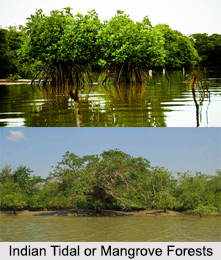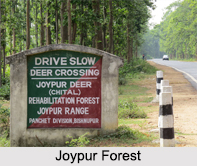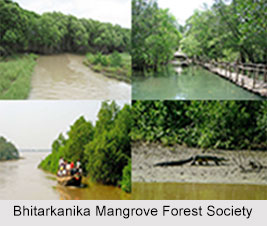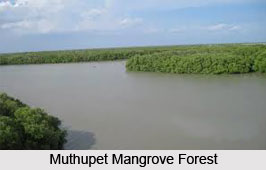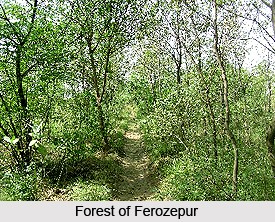 Indus River Delta-Arabian Sea mangroves comprise a vast expanse of mangrove eco-region nestled on the Arabian Sea coast of India. These mangroves mainly grow in the Indus River delta over the Arabian Sea which is a highly salty estuary, even more than the usual ones. Its salinity owes to the deposition of salts brought to the coast by the Indus River from the Thar Desert. This process is continuing since long as the river is being used increasingly for irrigation and water supply. These mangroves form a significant habitat exhibiting a mix of salt and fresh water where a vast variety of plants which grow well in salty environment thrives. The flora and fauna of the region are adapted to extreme temperature and salinity conditions. It also hosts a number of crustaceans and fishes which survive in the water beneath the tree roots deriving food, shelter and oxygen.
Indus River Delta-Arabian Sea mangroves comprise a vast expanse of mangrove eco-region nestled on the Arabian Sea coast of India. These mangroves mainly grow in the Indus River delta over the Arabian Sea which is a highly salty estuary, even more than the usual ones. Its salinity owes to the deposition of salts brought to the coast by the Indus River from the Thar Desert. This process is continuing since long as the river is being used increasingly for irrigation and water supply. These mangroves form a significant habitat exhibiting a mix of salt and fresh water where a vast variety of plants which grow well in salty environment thrives. The flora and fauna of the region are adapted to extreme temperature and salinity conditions. It also hosts a number of crustaceans and fishes which survive in the water beneath the tree roots deriving food, shelter and oxygen.
Geography of Indus River Delta-Arabian Sea Mangroves
Indus River Delta-Arabian Sea Mangroves originates at the Tibetan Plateau and continues through the north western part of India and ultimately ends at the Arabian Sea. It has extreme climate. During summers the temperature reaches up to 50 degree Celsius whereas in winters in becomes freezing cold. The monsoon in the region continues from July to September and measures about 100 to 500 millimetres of precipitation.
Flora of Indus River Delta-Arabian Sea Mangroves
 The vegetation of the Indus River Delta-Arabian Sea Mangroves is mainly dominated by a thick canopy and undergrowth of mangrove trees which do not exhibit much biological diversity. Indus River mangroves show even lesser diversity. Grey Avicennia is a highly salt resistant species and survives in extreme meteorological conditions. Rhizophora apiculata and Acanthus ilicifolius, Rhizophora mucronata and Ceriops tagal are other varieties found scattered in the region.
The vegetation of the Indus River Delta-Arabian Sea Mangroves is mainly dominated by a thick canopy and undergrowth of mangrove trees which do not exhibit much biological diversity. Indus River mangroves show even lesser diversity. Grey Avicennia is a highly salt resistant species and survives in extreme meteorological conditions. Rhizophora apiculata and Acanthus ilicifolius, Rhizophora mucronata and Ceriops tagal are other varieties found scattered in the region.
Fauna of Indus River Delta-Arabian Sea Mangroves
The region plays an important role in providing ideal habitat for the diverse invertebrates, crustaceans and fishes where these species also reproduce. About 123 species of birds have been recorded in the region among which none is endemic. It also serves as the abode of numerous seabirds. Fishing Cats are one of the prominent species among the mammals of the region. Other mammals include Indian Crested Porcupine, Indian Muntjac, Egyptian Tomb Bat, Vulnerable Rusty-spotted Cat, Brandt`s Hedgehog etc. Reptiles of the region enlist critically endangered Hawksbill Sea Turtle and Brahminy Blind Snake. Indian Rice Frog is a commonly found amphibian of the region.
Conservation of Indus River Delta-Arabian Sea Mangroves
The natural resources and habitats of the Indus River Delta-Arabian Sea Mangroves are presently under threat owing to the pollution caused by the industrial city and port of Karachi. The depletion of the water of Indus valley is also posing a hazard to the region. For the purpose of creating grazing land and obtaining firewood most of the mangroves of Indus delta have been cleared. However there still remains three protected areas in the region namely Mirpur Sakro Game Reserve, Marho Kotri Wildlife Sanctuary and Cut Munarki Chach Wildlife Sanctuary which still shelter abundant mangroves.
